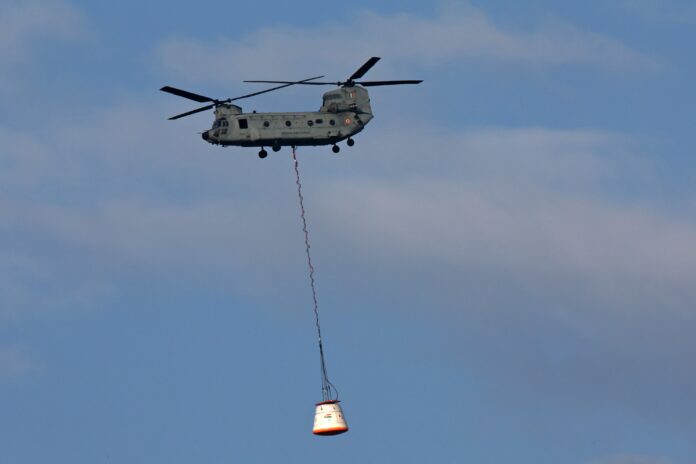The Indian Space Research Organisation (ISRO) has successfully carried out the first Integrated Air Drop Test (IADT-01), marking a key milestone in its Gaganyaan human spaceflight programme.
The test, conducted on Sunday at Satish Dhawan Space Centre (SDSC) Sriharikota, involved a joint effort by ISRO, the Indian Air Force, Defence Research and Development Organisation (DRDO), Indian Navy, and Indian Coast Guard. A 4.8-tonne simulated Crew Module, equipped with a parachute-based deceleration system, was released from a Chinook heavy-lift helicopter at an altitude of around 3 km.
The parachute system, identical to the one designed for Gaganyaan missions, included 10 canopies, two Apex Cover Separation (ACS), two Drogue, three Pilot, and three Main parachutes. The sequence began with the firing of ACS Mortars to deploy ACS parachutes, followed by the separation of the Apex cover. Drogue parachutes initiated the first stage of deceleration, after which Pilot parachutes deployed the three Main canopies, each 25 metres in diameter.
ISRO confirmed that the system successfully reduced the Crew Module’s terminal velocity to about 8 m/s, ensuring safe touchdown on the sea. Following splashdown, the simulated module was recovered by the Indian Navy using INS Anvesha and transported to Chennai port.
The agency also noted that the trial simulated a possible launch-pad abort scenario, with onboard avionics autonomously managing the deceleration sequence while transmitting telemetry to ground stations.
According to ISRO, the test was cleared after extensive modelling of both the Crew Module and helicopter dynamics, followed by multiple trial sorties. More such tests under varying deployment conditions are planned in the coming days to further qualify the parachute-based deceleration system.




